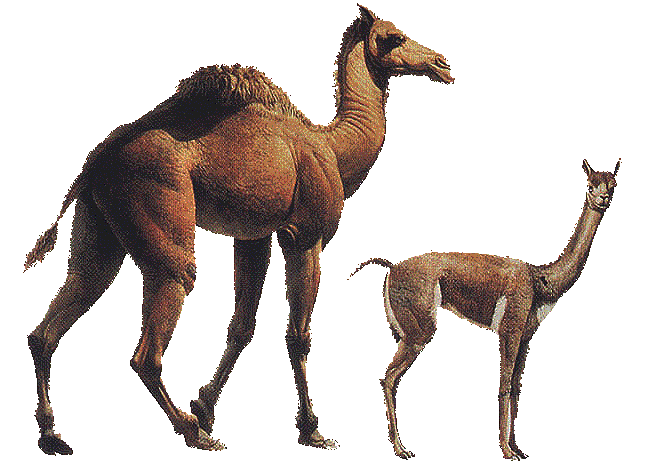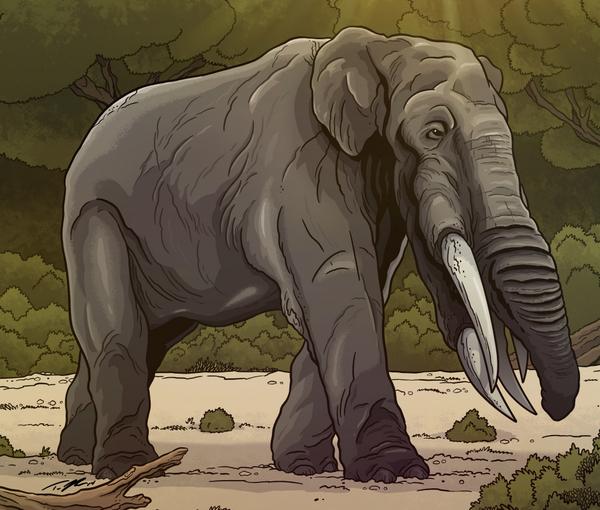Now and then I read an article in BYU Studies which especially interests me. One of those articles is titled "Animals in the Book of Mormon: Challenges and Perspectives" by Wade Miller and Matthew Roper. You can find the link here; it costs $1.29 to access if you're not a subscriber. It's definitely worth it. It's a long article (40+ pages) but I'll give you the Cliff Notes version here.
When the Book of Mormon first appeared, critics said that the animals referenced in it, such as horses, asses, elephants, swine and cows, were out of place since those animals didn't exist in the Americas before Columbus and other Europeans. And what in the world were cureloms and cumoms? However, more recent scientific discoveries have shown that species of those animals did exist at one time on these continents before Columbus. The question has now become, when did they become extinct?
The authors assume that the location of the lands in the Book of Mormon is Mesoamerica. The evidence for this has been discussed by many scholars. Advanced societies existed in this area long before Columbus came. The mild climate, advanced civilization, volcanic activity, existence of gold, silver, pearls, etc. discussed in the Book of Mormon all point to this area.
The people of Lehi found many different animals when they arrived in the promised land. All the animals mentioned besides the wild goat and beasts of the forest could have been domesticated by them. The elephant mentioned by the Jaredites is probably the mammoth. The earliest scientific literature refer to the mammoth as an elephant and it is closely related to the Indian elephant which is easily tamed. The most widespread North American mammoth is Mammuthus columbi.

The question of when these species became extinct is very complicated. A miniscule number of the plants and animals that have ever existed leave behind fossils--the estimate is much less than .1%. Finding an exact date for the extinction of every member of a species is basically impossible. Species rarely go extinct all at once. It can take thousands and hundreds of thousands of years for it to die out completely. For example, a rare large fish called the coelacanth was once considered to have become extinct over 65 million years ago. Then, in 1938, it was found living off the coast of east Africa and has been more recently found in Indonesia.
For a long time, mammoths were considered to have become extinct 10,000 years ago. But 25 years ago, remains were found in the Arctic dated from 2000 BC. Evidence of human and mammoth association have been found in a number of Mesoamerican places. In addition, there are Native American myths and traditions of large, elephant-like animals.
Clearly, it is possible for a species to live on for thousands of years after its last recorded appearance. The humid climate and acid soil in the tropical and semi-tropical environment of Mesoamerica make it even more difficult for fossils to exist. Even bones decay at a rapid rate. And the thick vegetation of this area make it difficult to find fossils if they exist. Many of the animal fossils that have been found in this area have been found in caves. As a species starts to die out, there are fewer and fewer members of the species to leave behind fossil records.
It is also possible that the Book of Mormon people called some animals different names than we do. Early Spanish explorers called the North American buffalo "cows". The shrub-ox, now extinct, is another possibility for the cow in the Book of Mormon. Bones of domesticated cattle have been found in caves in Mexico alongside human artifacts.
 |
| Shrub ox |
The swine referred to by the Jaredites might refer to American peccaries which might have been tamed by the Mayans. The early Spanish called them pigs. Remains of peccaries have been found in caves with human artifacts.
 |
| Collared peccary |
The history of the horse is a little complicated. The horse first started in North America and spread to the rest of the world from there. For a long time, the accepted wisdom was that the horse became extinct in the Americas about 10,000 years ago. However, there is no explanation for why this would happen since the horse does very well when it is wild. Additionally, there have been recent finds that suggest the horse did exist in Mesoamerica until much later on a limited basis. When a species goes extinct, it is more likely to last longer in the more mild climates such as Mesoamerica. Many bones of horses have been found which have not been carbon-dated, probably because carbon-dating is quite expensive. However, one of the authors did some years of research in Mexico and found some horse fossils. The fossils were carbon-dated to 450 BC. This would place the horse during the time of the Nephites.

What about cureloms and cumoms? This would be animals for which Joseph Smith knew no equivalent. The authors suggest that one candidate for this is the llama. It is quite unlikely that Joseph Smith knew about llamas since knowledge of this animal in North America was not widespread until the later 1800s. There are some extinct species of llama that were once native to North America. There are numerous evidences of this in petroglyphs in the American southwest and in bones found here. This animal could have been domesticated and been quite useful to the people of the Book of Mormon.
 |
| Two extinct species of llama |
 |
| A gomphothere |
Comments
Post a Comment